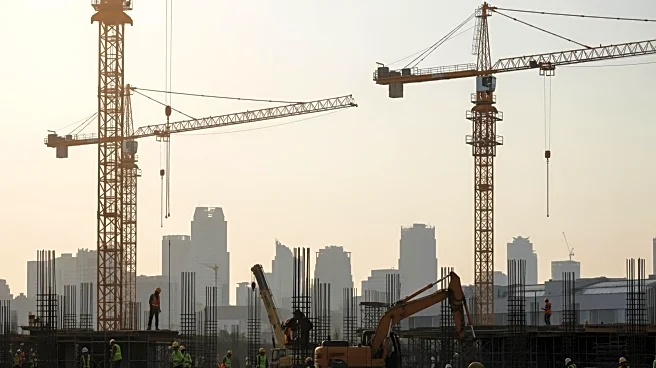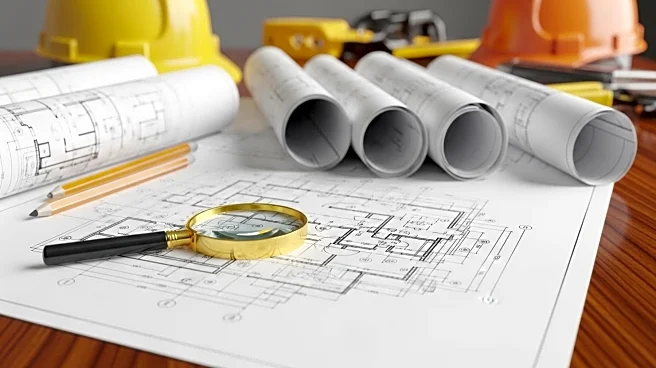What's Happening?
The construction industry is grappling with stagflation, a situation characterized by stagnant growth and persistent inflation. This economic condition is squeezing the sector from both sides, as demand
is suppressed by weak growth while costs remain high due to supply-side pressures. The private residential sector is particularly affected, with high interest rates, regulatory delays, and subdued household incomes challenging viability. Despite a slowdown in materials inflation from its 2022 peak, prices remain elevated, and contractors face rising costs with clients resistant to higher tender prices. This environment is leading to tighter margins and increased insolvency risks, as tender price increases lag behind rising input costs.
Why It's Important?
Stagflation presents a unique challenge to the construction industry, as it removes the usual counterbalance of lower costs during economic downturns. The sector's ability to navigate this climate is crucial for maintaining resilience and avoiding insolvency. Firms that manage risk effectively, maintain open dialogue with clients, and focus on long-term resilience are better positioned to withstand these pressures. The industry's response to stagflation will be shaped by the upcoming Autumn Budget and its ability to adapt to changing economic conditions. Successful navigation of this period could lead to competitive tenders and market share gains for firms that manage productivity and workforce capacity effectively.
What's Next?
The construction industry must shift its approach to forecasting and risk management to build resilience in a stagflationary climate. This includes stress-testing budgets against various outcomes and sharing scenarios openly with clients and partners. Moving away from large fixed-price commitments and exploring models that distribute responsibility more evenly can help manage risk. Early engagement, clarity around assumptions, and confidence in flagging uncertainties are essential to avoid disputes. Balancing workloads across sectors and regions and maintaining open dialogue about program pressures can prevent overexposure. The industry's ability to adapt to these challenges will determine its resilience and potential for growth.
Beyond the Headlines
Stagflation intensifies longstanding pressures in the construction industry, amplifying disparities and affecting tendering behavior. Contractors are increasingly reluctant to take on large or riskier projects, and insolvencies in the supply chain further dent confidence. However, opportunities exist for clients who proceed with investment to secure competitive tenders. The industry's focus on transparency, collaboration, and realism can sustain relationships and margins, even in a challenging economic climate. The ability to manage risk, productivity, and workforce capacity will be key to maintaining resilience and gaining market share.












